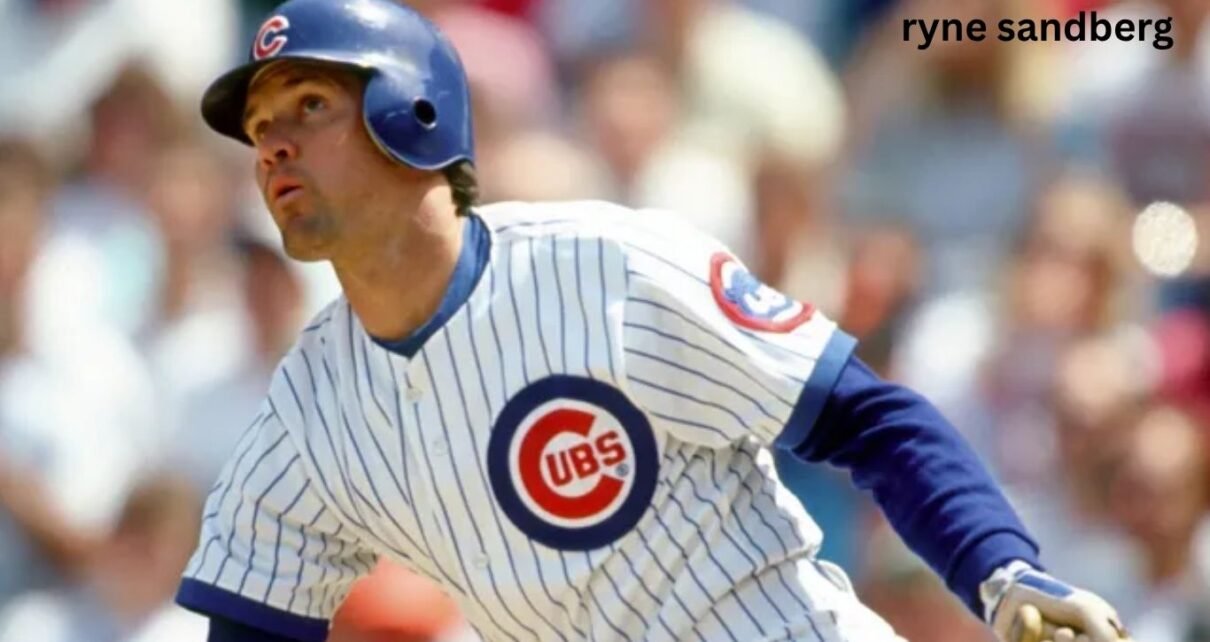The world of baseball is mourning the loss of one of its most beloved figures. Ryne Sandberg, the iconic Chicago Cubs second baseman and a member of the Baseball Hall of Fame, passed away at the age of 65 after a courageous battle with metastatic prostate cancer.
Sandberg, known affectionately as “Ryno,” was more than just a ballplayer. He was a symbol of grit, grace, and loyalty—both to the game and to the fans who adored him. His death marks the end of a remarkable chapter in Major League Baseball history and leaves behind a legacy of professionalism, sportsmanship, and excellence.
Early Life and Path to the Majors
Ryne Sandberg was born on September 18, 1959, in Spokane, Washington. A gifted multi-sport athlete, he chose baseball after being selected in the 20th round of the 1978 MLB Draft by the Philadelphia Phillies. Initially considered a utility prospect, Sandberg made his MLB debut in 1981, playing just a handful of games for the Phillies.
His career took a pivotal turn in 1982 when he was traded to the Chicago Cubs—a move that would become one of the most lopsided and historic deals in MLB history. The Cubs received Sandberg and Larry Bowa in exchange for Ivan DeJesus. Few could have predicted the impact that trade would have.
Breakout and Stardom with the Cubs
Sandberg’s transformation into an elite player began almost immediately. In 1984, he won the National League Most Valuable Player (MVP) award, hitting .314 with 19 triples, 200 hits, and 114 runs scored. His defense at second base was already Gold Glove caliber, but his offense was what shocked the league.
He wasn’t just a slick fielder—he could hit for power, run the bases, and deliver in clutch moments. That year, he led the Cubs to the postseason for the first time in 39 years, cementing his status as a franchise cornerstone.
Career Achievements and Accolades
Over his 16-year MLB career, Sandberg became one of the most decorated second basemen of all time. Here’s a snapshot of his stellar resume:
| Stat/Accolade | Achievement |
|---|---|
| Career batting average | .285 |
| Career home runs | 282 |
| Career RBIs | 1,061 |
| Career hits | 2,386 |
| Career stolen bases | 344 |
| All-Star selections | 10 consecutive (1984–1993) |
| Gold Gloves | 9 (1983–1991) |
| Silver Slugger Awards | 7 |
| National League MVP | 1984 |
| Hall of Fame Induction | 2005 (first ballot) |
| Cubs jersey retirement | #23, retired in 2005 |
He also held the MLB record for highest fielding percentage at second base (.989) at the time of his retirement, along with 123 consecutive errorless games.
The Iconic “Sandberg Game”
One of the most iconic moments of Sandberg’s career came on June 23, 1984, in a nationally televised game against the St. Louis Cardinals. In a dramatic performance, Sandberg hit two game-tying home runs off legendary closer Bruce Sutter in the 9th and 10th innings. The Cubs would go on to win the game in the 11th inning.
That performance, later dubbed “The Sandberg Game,” catapulted him to national fame and signaled a changing of the guard in the Cubs’ long history.
Coaching, Leadership, and Community Work
After retiring in 1997, Ryne Sandberg remained deeply connected to baseball. He worked as a minor league manager within the Cubs’ farm system before taking over managerial duties for the Philadelphia Phillies in 2013. Though his managerial record was mixed, his impact on young players was widely praised.
Sandberg also became a team ambassador for the Cubs and was a frequent presence at spring training and Wrigley Field. Off the field, he was active in charitable efforts, particularly in supporting children’s health through foundations he helped establish with his wife, Margaret.
Memorabilia and Collectibles: Market Overview
With Sandberg’s passing, demand for memorabilia honoring his career has seen a sharp increase. Below is a pricing guide based on current market trends:
| Collectible Item | Estimated Value (USD) | Notes |
|---|---|---|
| Signed Cubs jersey (#23) | $800 – $1,200 | Authenticated, framed editions |
| Autographed baseball | $300 – $500 | With certificate of authenticity |
| Sandberg rookie card (Topps 1983) | $1,500 – $3,000 | In mint or PSA-graded condition |
| Replica game-used bat (signed) | $500 – $800 | Often part of limited-edition sets |
| Miniature statue replica | $150 – $250 | Based on Wrigley Field sculpture |
Collectors are advised to verify authenticity through reputable dealers or grading services.
Health Battle and Final Days
In January 2024, Sandberg revealed he had been diagnosed with metastatic prostate cancer. After initially responding well to treatment, his condition worsened in late 2024. Despite declining health, Sandberg remained engaged with fans, offering candid updates and displaying extraordinary courage.
He passed away peacefully at his home, surrounded by his family. He is survived by his wife, children, and grandchildren.
Legacy: A Standard for Second Basemen
Ryne Sandberg didn’t just play second base—he redefined it. He proved that second basemen could hit for power, run the bases aggressively, and anchor a lineup. He inspired a generation of middle infielders to strive for more than just defensive excellence.
Beyond his stats, Sandberg will be remembered for:
- Quiet leadership
- Humility on and off the field
- Dedication to one franchise
- Consistent excellence across decades
Many fans and experts consider him the most complete second baseman of his generation—and perhaps in MLB history.
Tributes from Around BasebalFollowing the announcement of his death, heartfelt tributes poured in from across the baseball world:
- Former teammates called him a consummate professional.
- Cubs executives remembered his loyalty and legacy.
- Fans at Wrigley Field left flowers and jerseys by his statue.
Flags at Wrigley are expected to be flown at half-staff in his honor, and a moment of silence is planned ahead of the next home game.
Final Thoughts
Ryne Sandberg’s passing leaves an unmistakable void—not just in the Chicago Cubs family, but in all of Major League Baseball. He was a generational talent who brought dignity and excellence to the game.
For the fans who watched him leap to turn double plays or drive a fastball into the bleachers, he wasn’t just a ballplayer—he was a hero.
His memory, achievements, and influence will live on in the hearts of baseball fans, players, and historians for generations to come.


